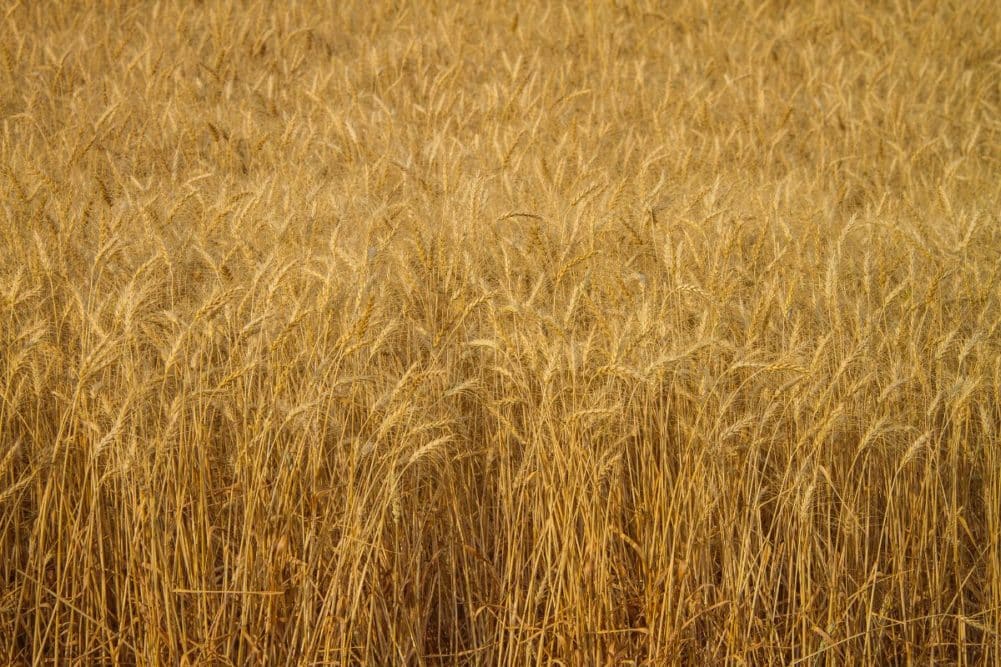
The US Department of Agriculture (USDA) in its July 12 Crop Production report forecast US 2023 winter wheat production at 1.206 billion bushels, up 6% from the June forecast of 1.136 billion bushels and up 103 million bushels, or 9%, from 1.104 billion bushels in 2022.
The USDA forecast production of spring wheat other than durum at 479 million bushels, down 3.6 million bushels, or 0.7%, from 482.2 million bushels in 2022. Durum production in 2023 was forecast at 54 million bushels, down 9.9 million bushels, or 16%, from 64 million bushels in 2022. It was the USDA’s first other spring wheat and durum estimates of the season.
US all-wheat production was forecast at 1.739 billion bushels, up 89.2 million bushels, or 5%, from 1.650 million bushels in 2022.
The US all wheat number slightly topped the range of analysts’ pre-report trade expectations of 1.637 billion to 1.730 billion bushels. The other spring wheat number was close to the average trade expectation of 477 million bushels, and the winter wheat production forecast was above analysts’ pre-report expectations that ranged from 1.1 billion to 1.187 billion bushels.
The USDA forecast winter wheat yield at 46.9 bushels per acre based on conditions as of July 1, up 2 bushels from 44.9 bushels in June but down 0.1 bushels from 47 bushels in 2022. Harvested area was forecast at 25.7 million acres, unchanged from the June Acreage report but up 9.6% from 23.5 million acres a year ago.
Production of hard red winter wheat was forecast at 577 million bushels, up 10% from 525 million bushels forecast in June and up 9% from 531 million bushels in 2022. Soft red winter wheat production was forecast at 422 million bushels, up 5% from 402 million bushels in June and up 25% from 337 million bushels last year. Soft white winter wheat production was forecast at 196 million bushels, down 1.7% from 199 million bushels in June and down 13% from 226 million bushels last year. Hard white winter was forecast at 11 million bushels, up 11% from June and up 7% from 11 million bushels harvested in 2022.
“The big news in wheat was the hard red winter number — shock-and-awe for USDA to increase it that much,” said Bill Lapp, founder and president of Advanced Economic Solutions, Omaha, Nebraska, US. “The average trade guess was 532 million bushels, so the number was way above what anybody anticipated. We had a broad-based increase in yields, including Kansas, Oklahoma and Texas. Big increases in Colorado and Nebraska with the rainfall. Montana yield up 5 bushels an acre, although that’s not yet certain, and then a little bit of an offset in South Dakota.”
Despite the increases in winter wheat production, “it’s still a tight situation,” Lapp said. “Ending stocks are forecast by the USDA to decline at the end of 2023-24. That seems reasonable.
We can’t afford to have any export demand coming at us. Even though we’ve gone 500 days of war in the Black Sea without any effect on our US exports here, the threat still looms. It’s probably gone from a 1-in-2 chance last May to a 1-in-20 chance today, but it still looms in the market, and if we have something adverse happen there and it raises world prices, tightens world stocks and ultimately leads to more exports of US wheat, that would be a bullish signal to the market.”
The USDA forecast spring wheat other than durum yield at 45.2 bushels per acre, down 1 bushel from 46.2 bushels in 2022. Harvested area was forecast at 10.6 million acres, unchanged from the June Acreage report but down 1% from 2022.
Production of hard red spring wheat was forecast at 441 million bushels, down 1.2% from 446 million bushels a year earlier. Durum yield was forecast at 37.9 bushels per acre, down 2.6 bushels from 40.5 bushels in 2022. Harvested area was forecast at 1.4 million acres, unchanged from the June Acreage report but down 9.7% from 1.6 million acres in 2022. “We still have to finish the crop up north and still have to be a little bit paranoid about what the spring wheat crop is going to ultimately become,” Lapp said. “The immediate need for protein was probably reduced by the crop production report because we’ve got more supplies of hard winter wheat and generally, or at least anecdotally, hard wheat protein levels are very elevated this year, so there are more supplies. Those are of high protein, so the need and the reliance on the spring wheat crop is not as great as it might have otherwise been.
